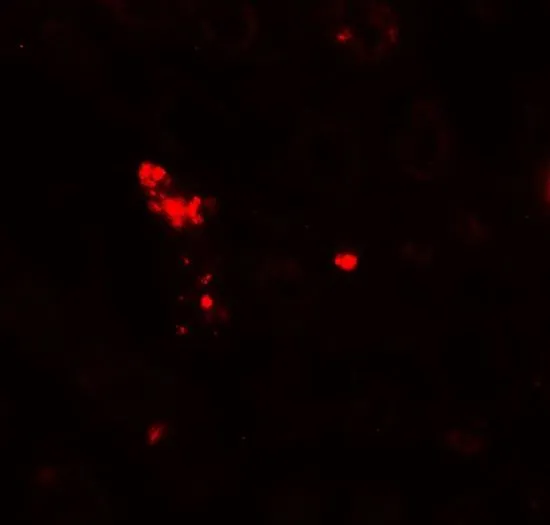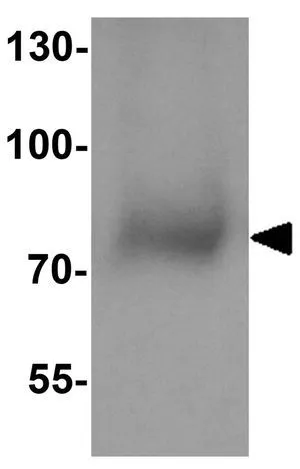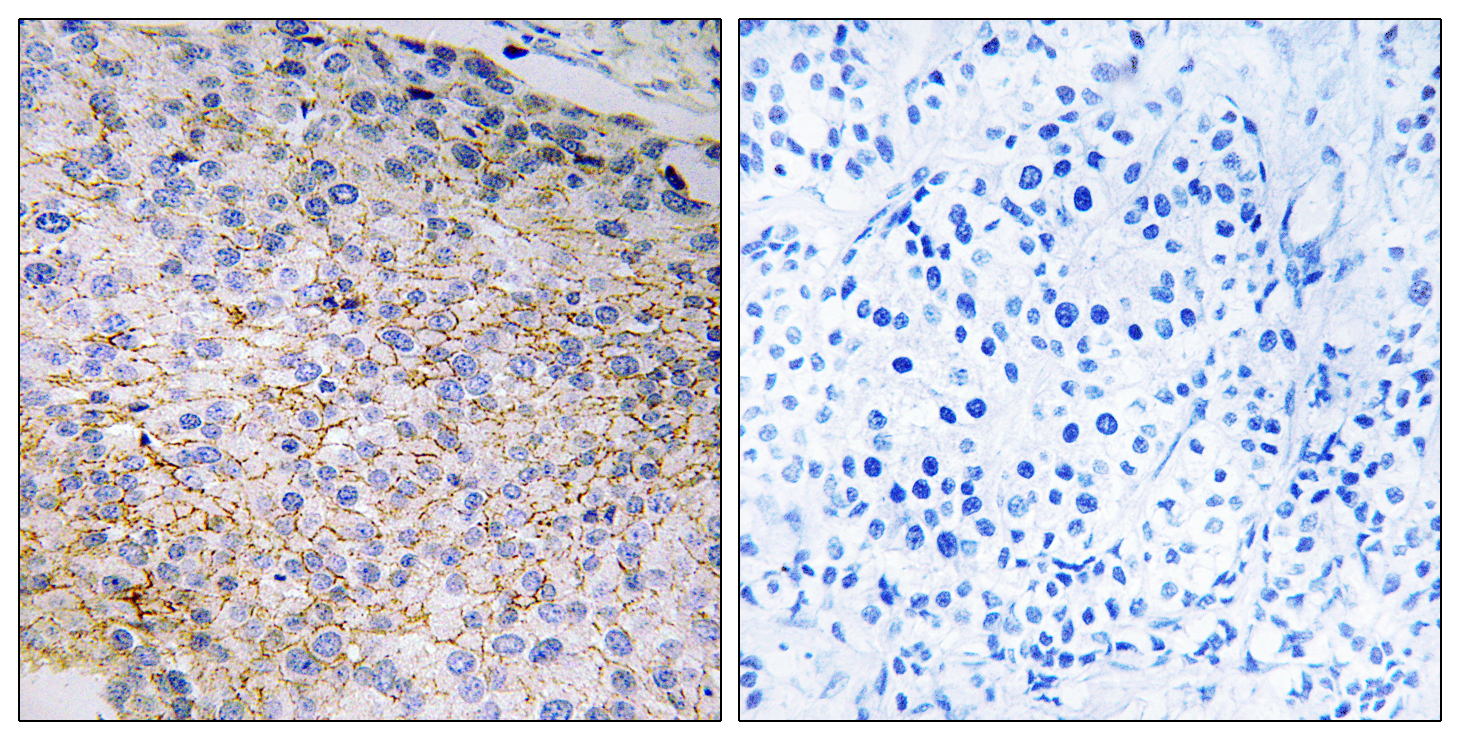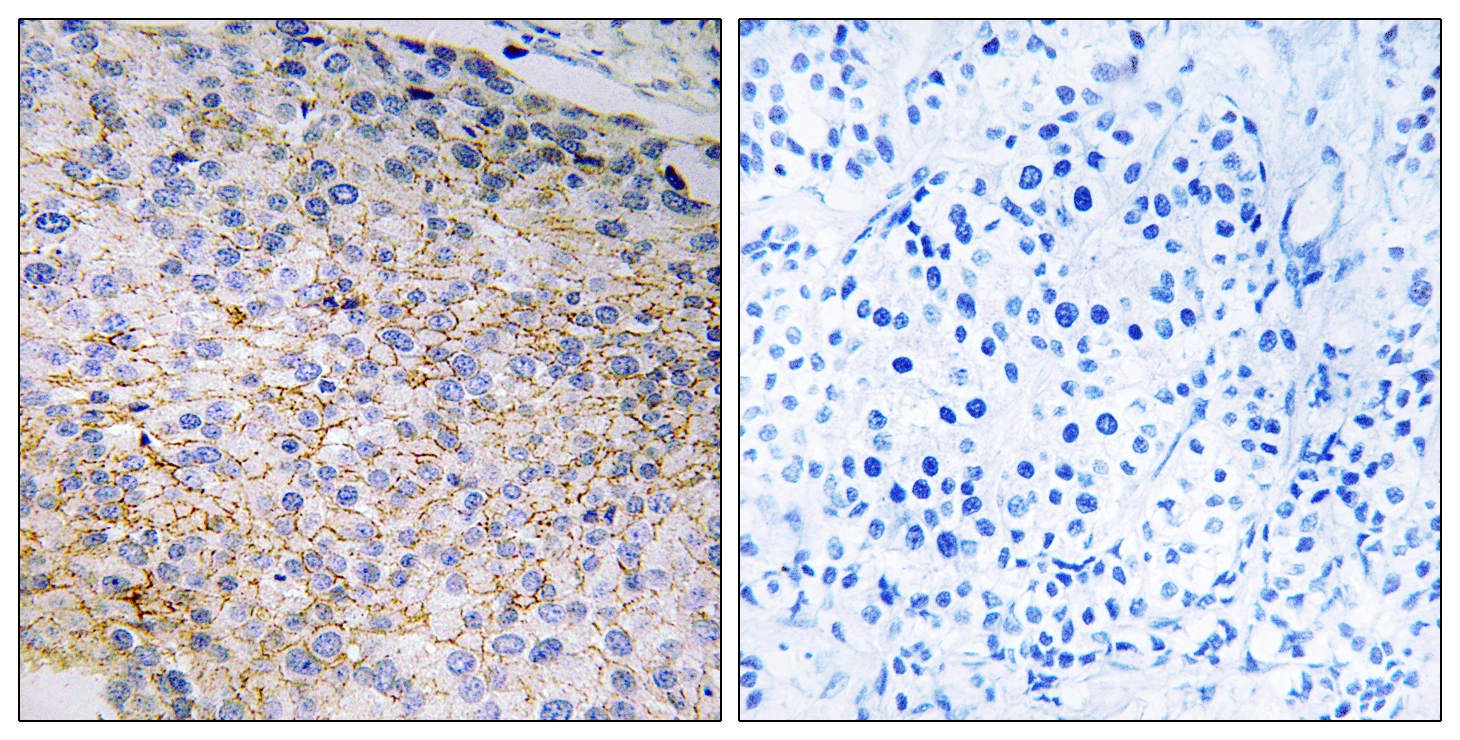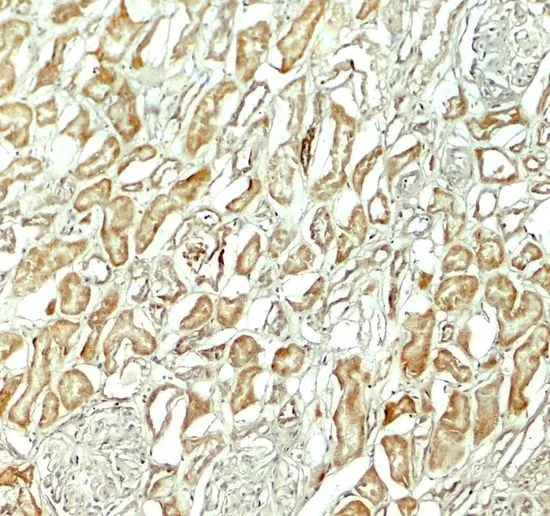
IHC-P analysis of human kidney tissue using GTX31931 NOX3 antibody. Working concentration : 5 microg/ml
NOX3 antibody
GTX31931
ApplicationsWestern Blot, ELISA, ImmunoHistoChemistry, ImmunoHistoChemistry Paraffin
Product group Antibodies
TargetNOX3
Overview
- SupplierGeneTex
- Product NameNOX3 antibody
- Delivery Days Customer9
- Application Supplier NoteWB: 1 - 2 microg/mL. IHC-P: 5 microg/mL. *Optimal dilutions/concentrations should be determined by the researcher.Not tested in other applications.
- ApplicationsWestern Blot, ELISA, ImmunoHistoChemistry, ImmunoHistoChemistry Paraffin
- CertificationResearch Use Only
- ClonalityPolyclonal
- Concentration1 mg/ml
- ConjugateUnconjugated
- Gene ID50508
- Target nameNOX3
- Target descriptionNADPH oxidase 3
- Target synonymsGP91-3, MOX-2, NADPH oxidase 3, NADPH oxidase catalytic subunit-like 3, gp91phox homolog 3, mitogenic oxidase 2
- HostRabbit
- IsotypeIgG
- Protein IDQ9HBY0
- Protein NameNADPH oxidase 3
- Scientific DescriptionThis gene encodes a member of the NOX family of NADPH oxidases. These enzymes have the capacity to generate superoxide and other reactive oxygen species (ROS) and transport electrons across the plasma membrane. The ROS generated by family members have been implicated in numerous biological functions including host defense, posttranlational processing of proteins, cellular signaling, regulation of gene expression, and cell differentiation. The protein encoded by this gene is expressed predominantly in the inner ear and is involved in the biogenesis of otoconia/otolith, which are crystalline structures of the inner ear involved in the perception of gravity.[provided by RefSeq, May 2009]
- Storage Instruction-20°C or -80°C,2°C to 8°C
- UNSPSC12352203

